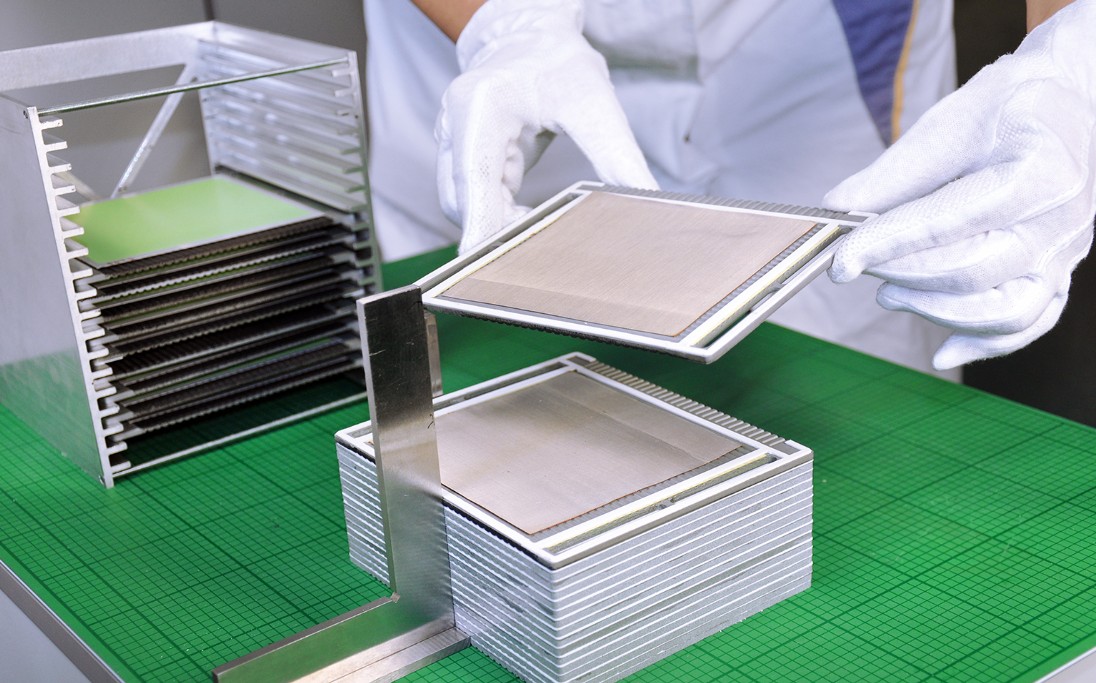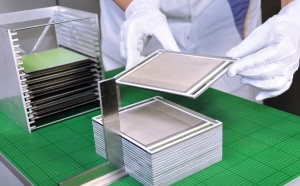June 4, 2014 – The Fraunhofer Institute for Ceramic Technologies in Dresden, Germany, has developed a simple fuel cell suitable for the home.
Fuel cells, which resemble the jewel cases used to store CDs and DVDs (see picture below), individually don’t produce a lot of power. But when stacked together they become significant generators of electricity and an alternative source of energy for home use. With this in mind the Fraunhofer Institute along with Vaillant, a heating manufacturer, set out to build a reliable and safe residential system that could used piped in natural gas as the initial fuel source to power and heat homes.
The end result a unit that is smaller than most conventional furnaces and that generates on average about one kilowatt of power. That type of power output in Germany is equated with the average consumption of a family of four. The current field test includes a small number of homes. But there are plans in the works for a small production run to increase installations to 150 both in and outside Germany. Currently the cost for one of these units is very expensive. But as manufacturing ramps up this impediment to adoption should decline.
Each unit consists of a solid fuel cell stack with the electrolyte made from ceramic material. The material can operate at temperatures up to 850 Celsius (1,562 Fahrenheit) degrees. When natural gas is introduced to the fuel cell stack it gets converted to a hydrogen-rich gas. Oxygen ions, not electrons, are transferred within the stack in a process called cold combustion.
For homes this type of energy source would mean the only connection required would be to a natural gas source. The house would be able to generate all the electricity it needs without relying on power from the grid. It will be interesting to see how and when this becomes commercially available.










